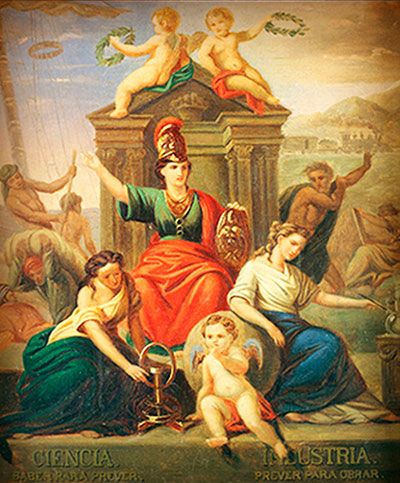Juan Cordero's work in San Ildefonso: That precursor mural that was destroyed
Tempera is one of the oldest and most traditional methods of painting, and Juan Cordero used it to paint his mural "The Triumph of Science and Work over Envy and Ignorance."





